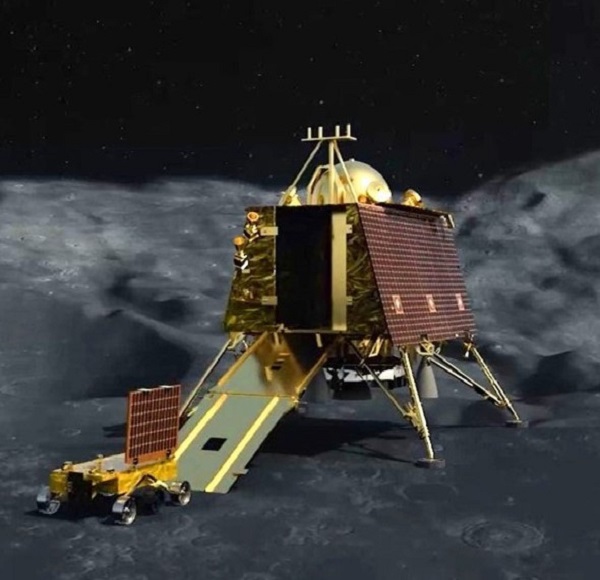India has become the first country in history to land a spacecraft near the Moon’s south pole in a major boost for the country’s space sector.
The achievement took place just days after Russia’s Luna-25 spacecraft – designed to reach this location first – crashed into the Moon. The Indian feat underscores the nation’s efforts to become an international power in space exploration.
“This is the heartbeat of 1.4 billion people,” said Prime Minister Narendra Modi in a speech to the Indian Space Research Organisation (ISRO). “This is the new India, the new beginning, the new thinking of the new efforts. This is a historic moment, and for every Indian, we are all very proud.”
Chandrayaan-3 touched down six weeks after launching on board a rocket from a spaceport in Andhra Pradesh. The spacecraft then orbited Earth several times to gain enough speed and momentum to reach the Moon.
Throughout the country, people crowded around televisions in offices, shops, restaurants and homes to watch the landing, while thousands prayed for the success of the mission.
Chandrayaan is a Hindi and Sanskrit word meaning ‘Moon vehicle’. The mission was India’s second attempt to land a spacecraft on the Moon after a software glitch caused its 2019 Chandrayaan-2 mission to crash.
The spacecraft is expected to remain on the ground for two weeks. After the lunar dust created by the landing settles, the solar-powered rover Pragyan will exit the spacecraft and begin running a series of experiments on the lunar surface, including a spectrometer analysis of the mineral composition of the unknown region.
The region is of great interest to researchers, as it is believed it could hold ice, which could supply fuel, oxygen and drinking water for future missions. However, until now, the rocky terrain has made landings extremely difficult.
“India’s pursuit of space exploration reaches a remarkable milestone, with the impending Chandrayaan-3 mission poised to achieve a soft landing on the lunar surface,” ISRO said in a press release. “This achievement marks a significant step forward for Indian science, engineering, technology and industry, symbolising our nation’s progress in space exploration.”
In addition to great renown for ISRO, the success of the lunar mission could also bring in private investment for future space programmes.

Besides India, only China, the Soviet Union and the US have been able to successfully land a spacecraft on the Moon.
“India’s successful Moon mission is not just India’s alone,” Modi said. “We can all aspire for the Moon and beyond.”
The past few years have seen a resurgence in the space sector, as well as rising interest in the Moon as a base for future exploratory missions and as a source of natural resources.
India’s success comes on the same week that Russia launched its first lunar mission in 47 years. The Luna-25 spacecraft entered the Moon’s orbit last week, but suffered a catastrophic “technical glitch” as it was preparing to move to a pre-landing orbit.
Russia’s space agency Roscosmos attributed the failure to a lack of expertise due to the long break in lunar research that followed the last Soviet mission to the Moon in 1976.
Earlier this summer, China announced its plans to send two rockets in a crewed mission to the Moon. The country has also recently brought back samples from the lunar surface for the first time in decades and landed a rover – Jade Rabbit – on the less-explored far side of the Moon.
Last year, Nasa successfully launched its Artemis spacecraft as part of a mission to take humans back to the Moon. The agency has also revealed its hopes of landing humans on Mars sometime in the 2030s as part of its Moon to Mars programme.
The UK is part of the Artemis programme, making contributions to the Lunar Gateway – a space station currently in development with the European Space Agency – working alongside the US, Europe, Canada and Japan. The nations have together developed the Artemis Accords, which are a set of principles to ensure a shared understanding of safe operations, use of space resources, minimising space debris and sharing scientific data.
Source: E&T










